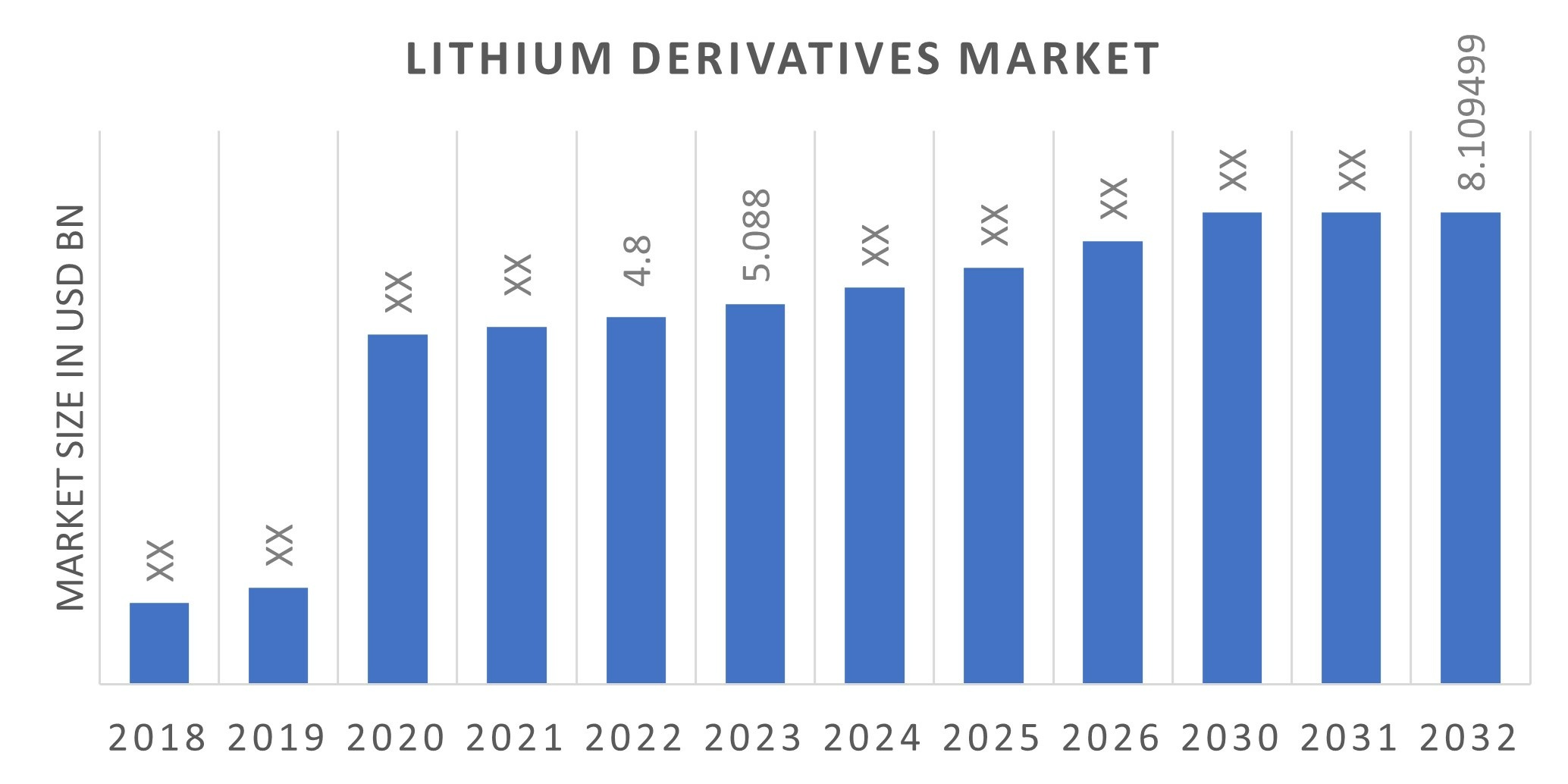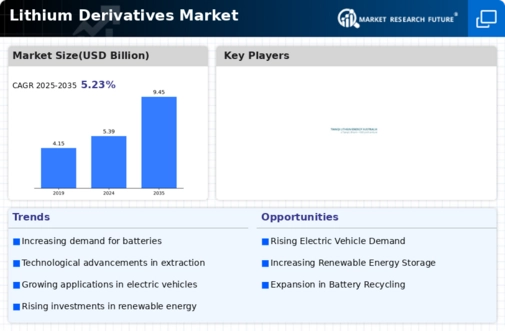Market Growth Projections
The Global Lithium Derivatives Market Industry is poised for substantial growth, with projections indicating a market value of 5.39 USD Billion in 2024. This growth trajectory is expected to continue, reaching approximately 9.45 USD Billion by 2035. The compound annual growth rate (CAGR) from 2025 to 2035 is estimated at 5.24%. This upward trend reflects the increasing demand for lithium derivatives across various sectors, particularly in electric vehicles and renewable energy applications. As the market evolves, stakeholders must remain vigilant to emerging trends and challenges that could shape the future landscape of the lithium derivatives industry.
Rising Demand for Electric Vehicles
The increasing adoption of electric vehicles (EVs) is a primary driver for the Global Lithium Derivatives Market Industry. As governments worldwide implement stricter emissions regulations and consumers shift towards sustainable transportation, the demand for lithium-ion batteries is surging. In 2024, the market is projected to reach 5.39 USD Billion, largely fueled by the automotive sector's transition to electric mobility. Major automotive manufacturers are investing heavily in lithium technologies, which further stimulates the market. This trend is expected to continue, with projections indicating a market value of 9.45 USD Billion by 2035, reflecting a compound annual growth rate (CAGR) of 5.24% from 2025 to 2035.
Government Initiatives and Incentives
Government policies and incentives aimed at promoting clean energy and reducing carbon footprints are pivotal for the Global Lithium Derivatives Market Industry. Many countries are implementing subsidies and tax breaks for electric vehicle purchases, as well as funding research and development in lithium technologies. These initiatives encourage manufacturers to invest in lithium extraction and processing, thereby boosting market growth. As a result, the industry is witnessing increased collaboration between governments and private sectors to enhance lithium supply chains. This supportive regulatory environment is expected to sustain the market's upward trajectory, contributing to its projected growth to 9.45 USD Billion by 2035.
Market Dynamics and Supply Chain Challenges
The Global Lithium Derivatives Market Industry faces various market dynamics and supply chain challenges that could influence its growth trajectory. Fluctuations in lithium prices, geopolitical tensions, and environmental regulations can impact the availability and cost of lithium derivatives. Additionally, the concentration of lithium resources in specific regions may lead to supply constraints. Companies are increasingly focusing on securing sustainable sources of lithium to mitigate these risks. While these challenges may pose obstacles, they also present opportunities for innovation in sourcing and processing lithium. The industry's ability to navigate these complexities will be crucial for maintaining growth in the coming years.
Expanding Applications Beyond Transportation
The Global Lithium Derivatives Market Industry is experiencing growth due to the expanding applications of lithium beyond traditional transportation uses. Industries such as renewable energy storage, consumer electronics, and aerospace are increasingly utilizing lithium derivatives. For instance, lithium batteries are essential for energy storage systems that support solar and wind energy, facilitating the transition to sustainable energy sources. This diversification of applications is likely to enhance market resilience and growth potential. As the demand for energy-efficient solutions rises, the market is expected to benefit from these emerging sectors, contributing to its projected CAGR of 5.24% from 2025 to 2035.
Technological Advancements in Battery Production
Technological innovations in battery production processes are significantly impacting the Global Lithium Derivatives Market Industry. Enhanced manufacturing techniques, such as solid-state batteries and improved lithium extraction methods, are leading to higher efficiency and lower costs. These advancements not only improve battery performance but also reduce environmental impacts associated with lithium extraction. As companies adopt these technologies, the market is likely to experience accelerated growth. The integration of advanced materials and recycling processes may also contribute to sustainability efforts, further driving demand for lithium derivatives in various applications, including consumer electronics and renewable energy storage.


